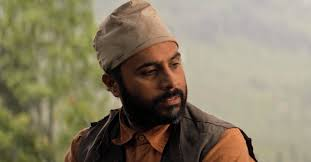STRINGS OF STRUGGLE: A HEARTFELT JOURNEY THROUGH 'SARANGI
This Nepali movie narrates the poignant and emotional
journey of Purna Bahadur Gandharva, a musician from a marginalized community
who plays the sarangi, a traditional Nepali string instrument. The film
delves into his struggles as a single father after being abandoned by his wife,
Batuli. It intertwines themes of resilience, love, sacrifice, and the harsh
realities faced by marginalized groups in Nepal, particularly the Gandharva
community, historically recognized for their musical heritage and
considered part of the lower caste in Nepal's hierarchical social structure.
KEY THEMES AND STORYLINE:
- Caste-Based
Discrimination: The movie portrays the systemic
oppression and prejudices faced by Purna and his family due to their
caste. Despite being gifted musicians, the Gandharva community is often
relegated to the peripheries of society, highlighting the entrenched
caste-based hierarchies that still affect rural Nepal.
- Socio-Economic
Struggles: Abandoned by his wife, Purna
finds himself burdened by the dual responsibility of playing the sarangi
for a meager income and raising his son, Kamal. The film vividly
illustrates the economic vulnerabilities of marginalized groups, where
cultural talents and traditions are overshadowed by the struggle for daily
survival.
- Father-Son
Relationship: Central to the story is the bond
between Purna and Kamal. Purna's tireless efforts to ensure Kamal receives
opportunities he never had reflect his selfless love. His desire to
provide a brighter future for Kamal represents the aspirations of
countless underprivileged parents.
- Abandonment
and Loneliness: The abandonment by Batuli adds
layers of emotional depth to Purna's character. His solitude becomes a
metaphor for the larger societal neglect of marginalized communities. It
also underscores the psychological toll of being left to bear the brunt of
societal and familial expectations alone.
- The
Sarangi as a Symbol: The sarangi, played by Purna,
becomes a metaphor for both his identity and his resilience. It represents
the cultural legacy of the Gandharvas, as well as Purna's personal
perseverance in the face of despair. The instrument's melancholic tones
mirror his struggles and inner strength.
- Hope
and Redemption: Despite the immense challenges,
the film carries an undercurrent of hope. It portrays the transformative
power of love, education, and determination to break free from the cycle
of poverty and discrimination.
CULTURAL AND SOCIAL IMPACT:
The movie offers a powerful commentary on the lingering
impact of caste-based discrimination in Nepal. It sheds light on the plight of
the Gandharva community, whose traditional art forms are often undervalued.
Through Purna's story, the film challenges viewers to reconsider societal norms
and advocate for inclusivity and equality.
Additionally, the movie acts as a bridge between tradition
and modernity. By featuring the sarangi prominently, it not only preserves but
also celebrates a cultural symbol that risks fading away in a rapidly
modernizing Nepal.
CINEMATIC EXECUTION:
The film’s strength lies in its raw emotional storytelling,
backed by soulful music and authentic depictions of rural Nepal. The performance
of the lead actor portraying Purna Bahadur Gandharva is likely heart-wrenching
and relatable, evoking empathy from the audience.
TAKEAWAY MESSAGE:
This is more than just a story about a father and his son;
it is a narrative about breaking barriers, confronting societal stigmas, and
finding hope in the darkest moments. It invites the audience to reflect on the
cultural and economic struggles of marginalized communities and emphasizes the
universal themes of love, sacrifice, and resilience.
PERFORMANCES
AND DIRECTION
Bijay Baral's performance as Purna Bahadur is deeply moving,
capturing the essence of a father weighed down by hardship and yet fiercely
determined to create a better future for his son. His portrayal brings a rare
depth to the character, as he embodies the pain of abandonment, the struggles
of poverty, and the resilience required to persevere. Baral's nuanced acting
ensures that every moment feels authentic, drawing viewers into Purna's world
of heartbreak and unyielding determination.
Prakash Saput's portrayal of Kamal complements Baral's
performance, creating a dynamic and emotional father-son relationship at the
heart of the story. Saput's earnestness in the role allows the audience to
connect with Kamal's journey as a son who admires and depends on his father but
also grapples with his own dreams and challenges. The chemistry between Baral
and Saput is a highlight, anchoring the film in a powerful narrative of
familial love and sacrifice.
Anjana Baraili, in the role of Batuli, brings a layer of
complexity to the story, despite her limited screen time. Her character, as
Purna’s wife, represents a pivotal point in the narrative, and her departure
sets the stage for much of the emotional turmoil that follows. While Batuli's
motivations and decisions might not be fully explored, Baraili's performance
hints at a character shaped by her own struggles and circumstances, adding a
subtle yet impactful dimension to the story.
Under Saroj Poudel’s direction, the film masterfully uses
its rural settings to enhance the storytelling. The physical landscape mirrors
the isolation and challenges faced by the characters, with sweeping vistas and
intimate close-ups amplifying the emotional weight of the narrative. Music,
particularly the haunting melodies of the sarangi, becomes a narrative device
in itself, underscoring moments of despair, hope, and love. Poudel's ability to
weave music into the fabric of the story not only pays homage to the Gandharva
community but also creates a visceral connection between the audience and the
characters.
However, while the direction excels in evoking powerful
emotions, some critics argue that the film occasionally veers into melodrama.
Certain scenes may lean heavily on sentimentality, with prolonged emotional
sequences that, while poignant, can feel overindulgent. This tendency to
amplify drama might detract from the realism of the narrative for some viewers,
though others might see it as an essential part of the film's emotional
resonance.
Overall, the combination of stellar performances, thoughtful
direction, and a poignant storyline ensures that the film leaves a lasting
impact. It succeeds in telling a deeply personal tale while shedding light on
broader societal issues, making it a compelling and meaningful cinematic
experience.
CINEMATOGRAPHY
AND MUSIC
The cinematography of the film, led by Shivaram Shrestha,
immerses the audience in the rustic beauty of Nepal’s rural landscapes. The
sweeping shots of hills, rivers, and simple village life not only add
authenticity to the story but also serve as a visual metaphor for the
characters' emotional and physical struggles. The interplay of light and shadow
in key scenes reflects the duality of hope and despair that runs through the
narrative. Shrestha’s camerawork feels deliberate and intimate, with close-ups
that capture the raw emotions of the characters and wide-angle shots that
emphasize their isolation within the vast, unyielding terrain.
The music, composed by Prashant Siwakoti, is one of the
film's most memorable elements. Siwakoti's compositions blend seamlessly with
the story, enhancing its emotional depth. Songs like "Kadhekuri" and
"Dainey Hataima" are not merely background scores; they are
extensions of the characters' inner lives, articulating feelings that words
cannot express. The sarangi, a traditional instrument central to the film,
becomes a poignant voice of its own. Its melodies echo Purna Bahadur’s
struggles and resilience, weaving sorrow and strength into the narrative.
The synergy between the cinematography and music elevates
the film, creating a sensory experience that resonates with the audience. The
visuals and sounds together paint a vivid picture of the characters’ lives,
ensuring that the story lingers long after the screen fades to black.
CONCLUSION
In conclusion, the film is a
masterful blend of emotional storytelling, evocative visuals, and soul-stirring
music. It poignantly portrays the struggles of marginalized communities in
Nepal while celebrating the resilience of the human spirit. The heartfelt
performances, particularly by Bijay Baral and Prakash Saput, anchor the
narrative, bringing authenticity and depth to the father-son relationship at
its core. Shivaram Shrestha’s cinematography and Prashant Siwakoti’s music
further enrich the film, immersing the audience in its world of beauty and
hardship. While it occasionally leans into melodrama, the film’s raw emotional
power and cultural significance make it a deeply impactful and memorable
cinematic experience










Comments
Post a Comment